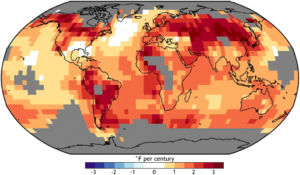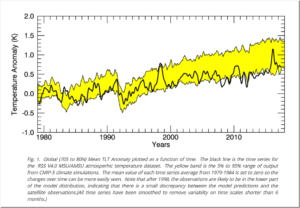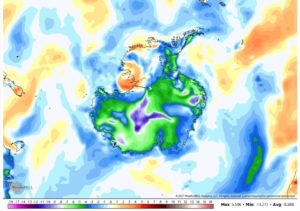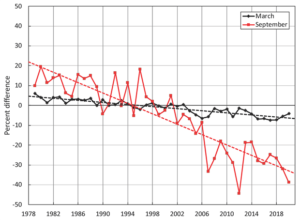by P. Homewood, Jan 17, 2021 in NotaLotofPeopleKnowThat
SUMMARY
Using well documented data on the infra-red absorption spectra of atmospheric gases it is a straight-forward process to infer the overall atmospheric IR absorption and from that the effective global average temperature. The simplest of atmospheric models has been used: the atmosphere is considered to be a uniform thin absorbing layer of gas. The results demonstrate clearly that the warming effect of the atmosphere is almost entirely due to the spectral absorption characteristics of CO2 and H2O. They are both exceptionally strong absorbers of infra-red radiation. It is however this strength which determines the characteristics of the earth’s temperature, and in particular its stability.
70% of the energy radiated from the earth is removed by a mixture of 0.1% H2O and 200ppm of CO2. This alone is sufficient to raise global temperatures from the chilly 255K of the estimated zero atmosphere condition to 284.3K, less than 4deg below current average temperatures. An estimation of the current atmospheric mixture of gases is calculated to deliver a global mean temperature of 286.8K close to the best estimate of 288K for that temperature. Further increases in both H2O and CO2 have relatively small impacts on temperatures. This is due simply to the fact that at current concentrations the spectra of both H2O and CO2 have effectively extracted most of the energy at wavebands corresponding to their molecular absorption spectra. There is little further energy to be extracted by adding more H2O and CO2. This results in climate sensitivity values of less than 0.5degC, in comparison to the 1.5 to 5 degC range quoted by the IPCC.
CO2 levels of 3000ppm will only raise temperatures by a further 1.5K. These temperature increases are in fact well within natural variations seen in the past, including the medieval warm period and the little ice age of some 300 years ago.
The possibility of positive feedback from water vapour is discounted by the simple fact that the H2O spectrum is incapable of absorbing significant further amounts of radiated energy and the modest increase in temperature due to increasing CO2 levels is unable to deliver any significant increase in H2O concentration due to the specific relationship of H2O saturation vapour pressure and temperature. It would take an increase in temperature of 10degC to double the mean H2O atmospheric concentration, and that doubling would only result in a temperature increase of 2degC.
The impact of other known “greenhouse’ gases, CH4 and N2O are also calculated from known IR spectra data. Their absorption spectra are swamped by H2O and CO2. The combined warming caused by current atmospheric concentrations will elevate temperature by only 0.2K and increasing concentrations by a factor of 10 will only result in a further temperature increase of 0.5K.
The “greenhouse effect” is dominated by the absorption spectrum of H2O with a little help from CO2. At current concentrations of both gases it is inconceivable that further increases in concentrations will lead to any significant warming. Increasing CO2 concentration to 3000ppm and doubling the mean H2O level to 2% would result in a global temperature increase of 3.4K.
In short, there is no climate emergency, at least due to “greenhouse gases”.
The full paper can be read here:
co2-the-miracle-molecule-22637
…
See this Addendum





